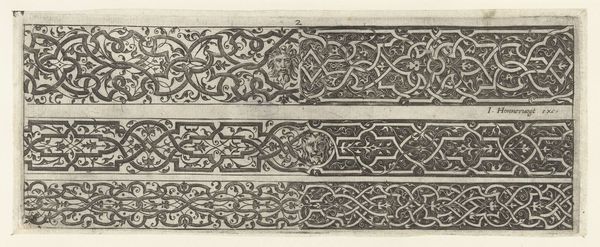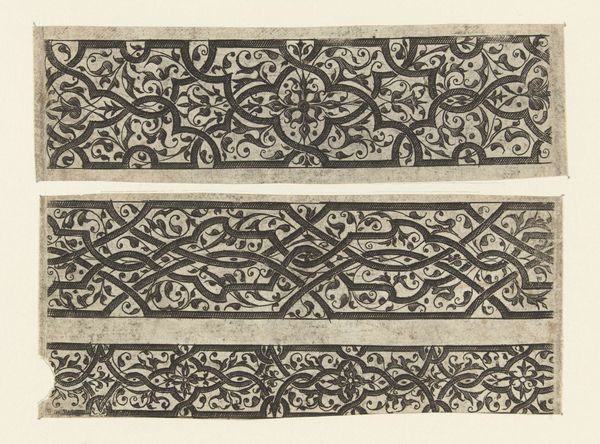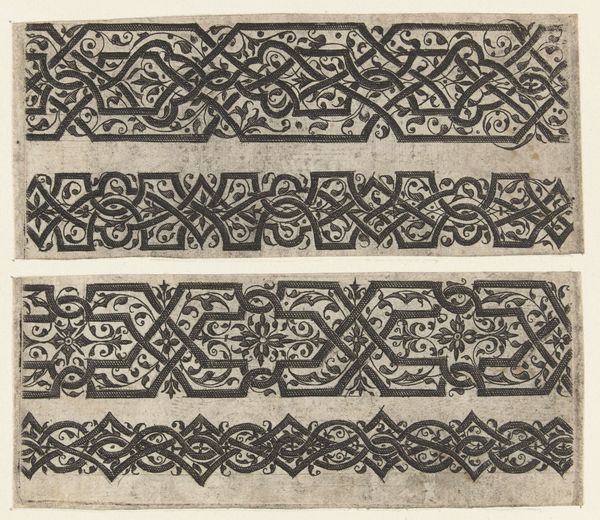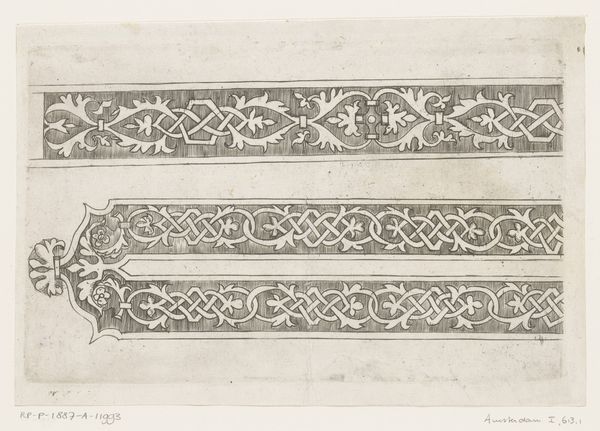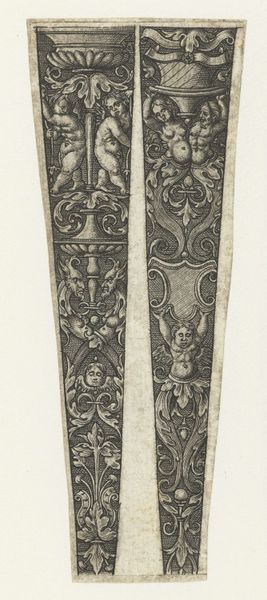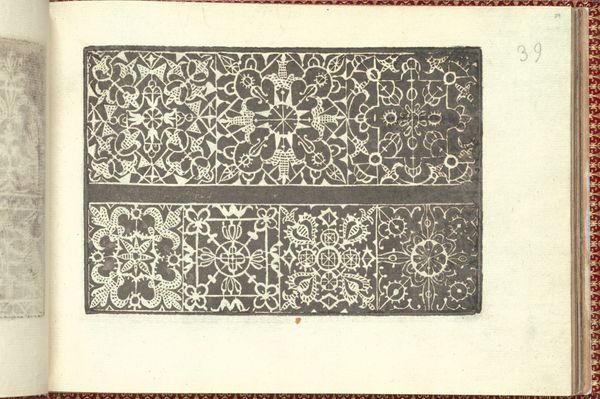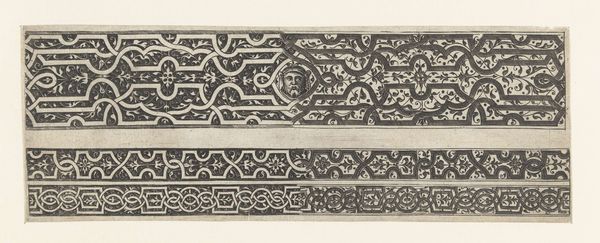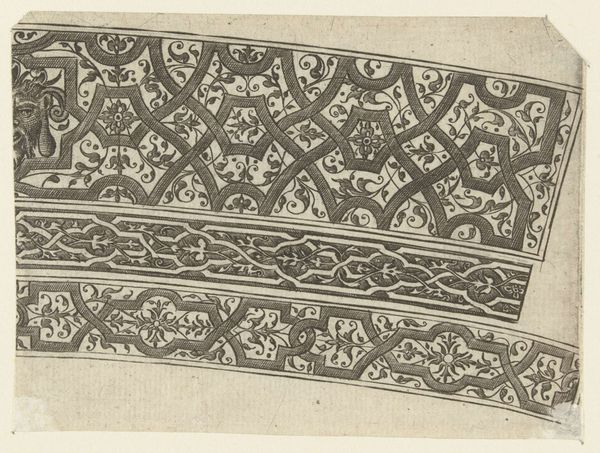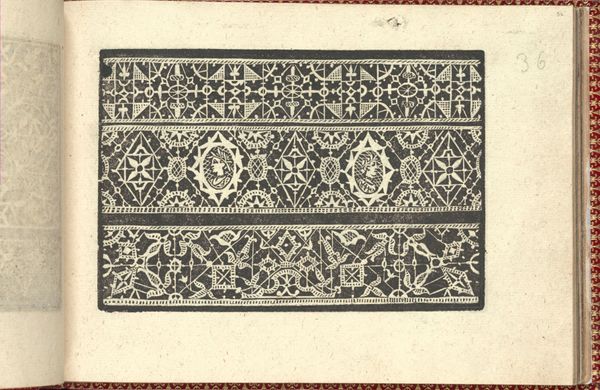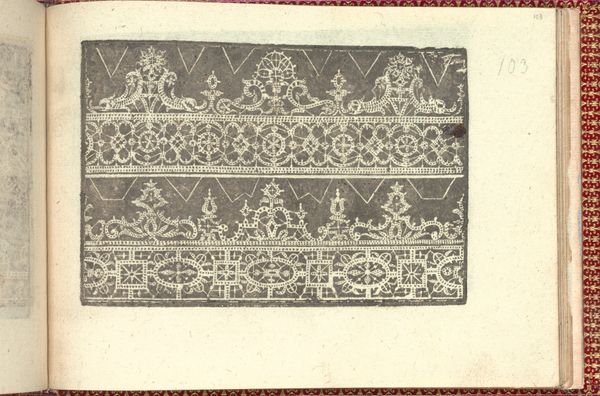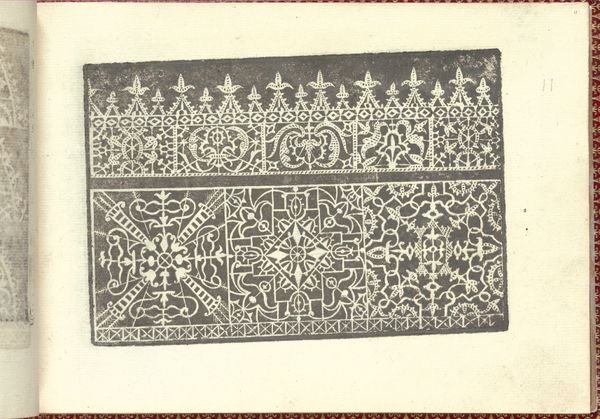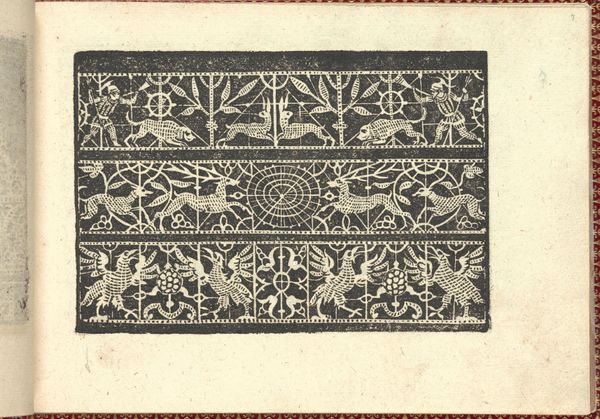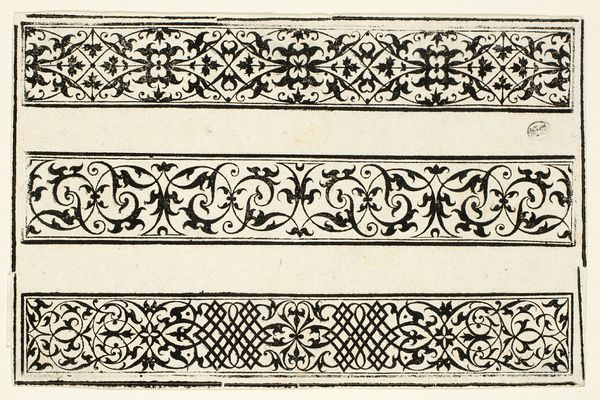
Drie friezen met moresken, in het onderste bevindt zich een mascaron 1550 - 1580
0:00
0:00
print, engraving
#
pen drawing
# print
#
geometric
#
line
#
northern-renaissance
#
engraving
Dimensions: height 76 mm, width 233 mm
Copyright: Rijks Museum: Open Domain
Editor: Here we have *Drie friezen met moresken, in het onderste bevindt zich een mascaron,* created anonymously between 1550 and 1580. It’s a pen drawing, an engraving. These intricate patterns are so detailed! I find the geometric repetition mesmerizing. What is your perspective on this work? Curator: From a formalist approach, the power of this piece lies in its composition. Note how the anonymous artist divides the work into three distinct registers, each showcasing a unique interpretation of the moresque. Observe the careful balance between positive and negative space. How does the linework contribute to the overall visual texture? Editor: The lines are incredibly fine, creating a delicate yet complex design. There’s a sense of depth, even though it's a flat image. I see interweaving lines that create this effect. Curator: Precisely. And consider the interplay between geometric shapes and organic motifs. Notice how certain lines curve or bend, offering contrast with sharp corners and edges, giving the engraving its rhythm and overall appeal. It creates visual tension within each band. Is there any element that draws your attention most? Editor: The mascaron! In the bottom frieze. Its presence disrupts the strict geometric patterns elsewhere. Why is it located in the last frieze? Curator: The positioning and inclusion of the mascaron could be an intentional decision by the artist, or a statement of the artist inserting personality into his or her work. The element creates disruption in the otherwise perfectly balanced composition. Its placement contributes to the dynamism of the entire piece. What are your final thoughts? Editor: I see the appeal in analyzing the elements—line, form, shape, and pattern. Thanks, I understand more of what the artist might have wanted to achieve! Curator: It has been my pleasure! Examining the relationships and forms leads to profound insights into the work and possibly, the intentions, or simply the appeal, that inspired its creation.
Comments
No comments
Be the first to comment and join the conversation on the ultimate creative platform.
